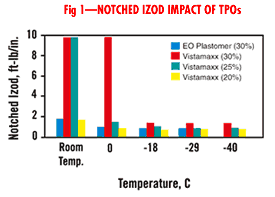Automotive
First Plastics Molders Sign Up For Ford's 'Supplier Park'
A 155-acre lot in the Chicago area, vacant for 40 years, will be converted into the site of the first automotive "supplier park" in the U.S.
Read MoreWood on Plastics: Auto Market Ready for Ignition
North American sales and production of motor vehicles suffered a severe decline during the recent recession, and the travails of the auto sector were never far from the public’s collective consciousness.
Read MoreU.S. Molder/Moldmaker Banks on Tandem Tooling
Erwin Quarder Inc. in Grand Rapids, Mich., a mold maker and injection molder of automotive and medical parts, thinks it has found the next big thing in tooling.
Read MoreNew High-Performance Nylons For Automotive, Electronics, Packaging
Nylon producer Ems-Grivory America in Sumter, S.C., is reaching beyond its traditional product range to bring out new partially aromatic nylons that bridge the gap between standard engineering thermoplastics and high-performance specialty polymers.
Read MoreNylon Oil Sump Gets Its Start in Trucks
Integrated nylon oil sumps for a new line of trucks made by Mercedes-Benz have begun to roll down German autobahns, paving the way for a potential torrent of conversions from aluminum, steel, and thermosets to thermoplastics.
Read MoreStrength and Beauty - New Nylons Bring Both To Under-Hood Parts
Usage of polyamides in U.S. under-hood parts could double in the next decade if nylon 6 and 66 follow European trends toward large panels that not only protect but beautify the engine compartment.
Read MoreMetal Replacement Accelerates In Under-Hood Parts
Plastics are making new inroads in valve covers and air-intake manifolds on U.S.-built vehicles.
Read MorePlastic-Metal Hybrids Make Headway On and Off the Road
Plastic-metal hybrids are replacing all-steel structures in automotive front-end modules at an accelerated rate.
Read MoreNew Metallocene TP Elastomers Tackle Films, Fibers, TPOs
The Vistamaxx family of propylene-ethylene specialty elastomers recently unveiled by ExxonMobil Chemical (see Your Business In Brief, August 2003) holds promise in a broad range of applications from very soft fabrics and films to very hard TPOs.
Read MoreNPE News Wrap-Up: Materials
New materials at NPE 2003 target automotive, appliance, and packaging sectors. Engineering thermoplasticsdominate the news, but there were also severalnew TPEs and a few polypropylene introductions.
Read More








